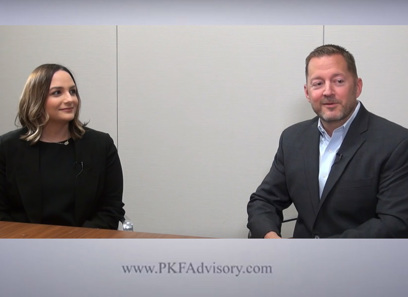M&A Outlook: Key Mergers and Acquisitions Trends to Watch in the Near Future
M&A Outlook: Key Mergers and Acquisitions Trends to Watch in the Near Future
Blog Article
Recognizing the Fundamentals of Mergers and Acquisitions for Business Growth
Mergers and acquisitions (M&A) stand for essential tactical decisions for organizations looking for to enhance their competitive positioning and drive growth. As organizations navigate this complex landscape, the intricacies of the M&A procedure and the crucial gamers involved come to be essential to achieving desired end results.
Meaning of Mergers and Acquisitions
Mergers and acquisitions (M&A) stand for tactical transactions where firms consolidate their procedures to boost growth, market share, or competitive advantage. A merger usually entails 2 companies coming with each other to form a new entity, often with a common vision and common advantages. In comparison, a purchase happens when one business acquisitions one more, thinking control and integrating its procedures right into the buyer's structure.
These deals are driven by numerous motivations, including the wish to achieve economies of range, diversify product offerings, get in new markets, or obtain innovative innovations. M&A task is an important aspect of business approach, enabling firms to adjust to changing market problems and react properly to competitive pressures.
Moreover, effective M&A transactions require detailed due diligence, cautious settlement, and reliable assimilation intending to recognize the expected harmonies. The intricacy of these deals emphasizes the relevance of lawful, economic, and functional considerations, as well as the demand for positioning between the business cultures of the combining entities - M&A. Ultimately, M&An acts as a powerful tool for companies looking for to position themselves for sustainable growth and increased profitability in an ever-evolving service landscape
Kinds of Mergers and Acquisitions
While the landscape of acquisitions and mergings includes a selection of techniques, they can largely be classified into several distinctive kinds based on their nature and objectives. One of the most common types consist of horizontal, upright, corporation, and market-extension mergings.
Straight mergers take place between companies operating in the very same market and at the very same stage of manufacturing. This kind aims to settle market share and decrease competition. Vertical mergings, on the other hand, entail companies at different phases of the supply chain, permitting boosted effectiveness and control over production processes.
Empire mergers include companies from unassociated industries, intended at expanding line of product or entering new markets, therefore minimizing risk direct exposure. Market-extension mergings take place between business in different geographical markets but within the exact same sector, allowing them to expand their consumer base and improve market reach.
Each kind of merging or acquisition offers distinct calculated purposes and can substantially influence the resulting organization's functional dynamics, market position, and development trajectory. Recognizing these categories is crucial for companies thinking about M&A as a path for expansion and affordable benefit.
Principal in M&A

Investment bankers play a critical function, working as middlemans that help with arrangements and give evaluation insights. Their experience parties both aids navigate intricate financial landscapes, making certain equitable and fair terms. Lawful advisors are likewise crucial, as they guarantee conformity with governing structures and take care of risk by preparing and evaluating agreements.
In addition, economic experts analyze the monetary wellness of both entities, recognizing harmonies and forecasting post-merger performance. Business advancement teams within business are in charge of recognizing prospective targets and strategizing on purchase methods.
M&A Process Summary
The process of acquisitions and mergers (M&A) generally includes numerous distinctive stages that call for cautious preparation and implementation. At first, the procedure starts with calculated planning, where companies identify their objectives and purposes for the M&A, such as market development or diversity. This is followed by target identification, throughout which prospective purchase targets or merger companions are looked into and examined for compatibility.
Once ideal prospects are recognized, the due persistance stage commences. This crucial action involves a thorough examination of the target firm's financials, operations, and lawful standing to determine any possible dangers. After due persistance, the settlement Click This Link stage occurs, where the regards to the offer, consisting of rate and framework, are discussed and concurred upon.
Upon reaching an arrangement, the transaction transfers to the execution phase, involving the composing and signing of legal papers. The integration stage occurs, where the business function hop over to here to combine their systems, societies, and operations efficiently. Successful assimilation is crucial for realizing the anticipated harmonies and gain from the M&A. Each phase is crucial, calling for cooperation among numerous stakeholders to ensure a smooth transition and long-lasting success.
Benefits and Challenges of M&A
Identifying the capacity for development and boosted market share, firms often pursue mergings and acquisitions (M&A) to capitalize on tactical advantages. The main benefits of M&An include enhanced functional performance, increased item offerings, and accessibility to new markets. By integrating resources and experience, companies can achieve economic situations of range, therefore enhancing and minimizing costs productivity. Furthermore, M&A can promote advancement with the combination of diverse abilities and modern technologies.
Nonetheless, the difficulties connected with M&A are considerable. Social integration presents a significant hurdle, as varying business cultures can cause employee discontentment and turnover. Moreover, the monetary ramifications can be discouraging; the expenses of the purchase process, including legal costs and due diligence, can be significant. Misaligned expectations concerning harmonies can additionally result in frustration, as anticipated benefits might fall short to appear (M&A).
Moreover, regulatory examination can complicate the M&A landscape, requiring firms to navigate complicated lawful needs. In summary, while M&A can be a powerful tool for growth, business have to weigh the prospective see it here benefits against the intrinsic obstacles to guarantee successful combination and long-lasting value creation.
Final Thought

Mergers and procurements (M&A) represent tactical deals where business settle their procedures to boost development, market share, or affordable benefit - M&A. Inevitably, M&An offers as an effective device for firms looking for to position themselves for sustainable growth and increased success in an ever-evolving service landscape
At the center are the acquirers and target firms, whose strategic goals drive the motivation for M&A. The process starts with critical preparation, where firms recognize their objectives and objectives for the M&A, such as market expansion or diversification.Recognizing the potential for development and raised market share, companies typically pursue procurements and mergings (M&A) to exploit on critical advantages.
Report this page